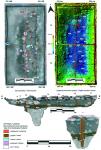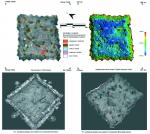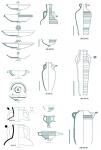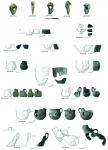Summary (English)
UNDERWATER ARCHAEOLOGICAL EXCAVATIONS IN FRONT OF THE MOUTH OF THE RIVER OF ROPOTAMO (Kalin Dimitrov – kalin.d@abv.bg, Jonathan Adams, Johan Rönnby) The archaeological site in the gulf between St. Demetrius (Skombolito) Cape and the mouth of the River of Ropotamo was explored during the 1980s. The excavations in 2017 and 2018 revealed that the gulf was used as a harbor during the Ottoman period, Late Antiquity and Roman period. A layer of sediments without any archaeological finds was situated beneath the harbor accumulations and the remains of a settlement of the First Phase of the Early Bronze Age (dated with 14C samples to 3080 – 2970 cal. BC) were situated beneath. In 2019, the excavations continued in three sectors: Т1, Т2–Т3 and Т4. In Trenches Т2–Т3, no archaeological material was discovered in Strata VI and VII, situated beneath Stratum V of the Early Bronze Age. The explorations of wooden posts Nos. 10 and 14 showed that they were driven in a terrestrial environment just above the level of the ancient coastline. During the construction of the settlement at the end of the 4th millennium BC, the sea level was c. 5.80 m beneath the present-day sea level. In 2017, 2018 and 2019, 18 wooden posts were discovered in Trenches Т2–Т3. The harbor accumulations were documented in the upper strata of Trench T4 and finds from all the relevant periods were discovered, while the archaeological material of the Roman period prevailed. Finds from the Archaic and the Hellenistic period were discovered as well. Fifty-five wooden posts of the Early Bronze Age were documented beneath Stratum IV consisting of sediments without archaeological finds. Fragmentary burned wattle-and-daub, fragments from an oven, five horn tools, flint tools, querns and pestles, and at least 14 ceramic vessels were discovered. The Early Bronze Age settlement was built on land and was later flooded when the sea level rose. The Black Sea level has risen by c. 5.80 meters in the last 5,000 years.
- Kalin Dimitrov - Centre for Underwater Archaeology
- Jonathan Adams - Centre for Maritime Archaeology - University of Southampton
- Johan Rönnby - Maritime Archaeological Research Institute - Södertörn University
Director
- Johan Rönnby - Maritime Archaeological Research Institute - Södertörn University
- Jonathan Adams - Centre for Maritime Archaeology - University of Southampton
- Kalin Dimitrov - Centre for Underwater Archaeology
Team
Research Body
- Centre for Maritime Archaeology - University of Southampton
- Centre for Underwater Archaeology
- Maritime Archaeological Research Institute - Södertörn University





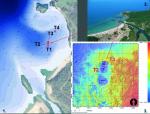
![Download [PDF]](/excavation/skins/fasti/images/results/download_sml.png)
